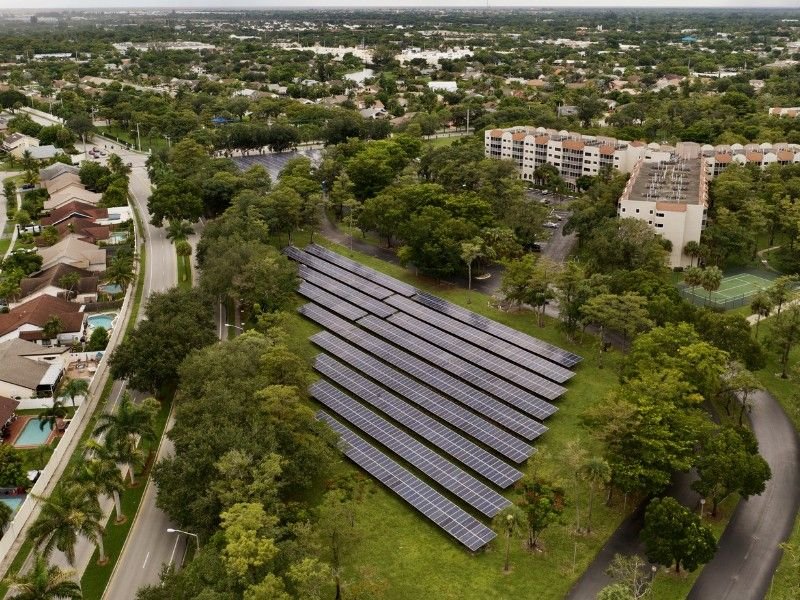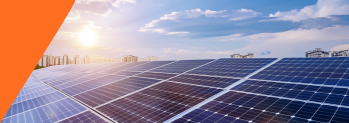Ground-mounted solar panels are photovoltaic (PV) systems that are installed on the ground rather than on rooftops. Unlike rooftop solar installations, ground-mounted systems can be placed anywhere on open land, making them ideal for businesses and industries with large spaces.
These panels have gained significant popularity in India, especially in commercial and industrial sectors, due to their ability to scale, efficient energy production, and ease of maintenance. The rise of renewable energy in India, driven by government incentives and the need for sustainable energy solutions, has accelerated the demand for solar power.
Ground-mounted solar panels, in particular, offer a viable solution for businesses looking to lower operational costs and reduce their carbon footprint. This guide delves into the types, costs, and benefits of ground-mounted solar panels, helping you understand why they might be the perfect choice for your business or industry.
Types of Ground Mounted Solar Panels: Fixed-Tilt vs. Tracking Systems
There are two primary types of ground-mounted solar panel systems: fixed-tilt and tracking systems. Each has unique benefits suited to different energy requirements and geographical locations.
The Return on Investment (ROI) is a key concept when it comes to solar power. The ROI measures how long it will take for your investment in solar panels to pay off in terms of savings on electricity bills. Over time, the savings often exceed the initial cost, making solar panels a smart long-term investment.
Cost Requirement to Install Ground Mounted Solar Panels
The cost of installing ground-mounted solar panels varies depending on several factors, such as land preparation, equipment, and labour. On average, the cost for a ground-mounted system in India ranges from ₹45,000 to ₹70,000 per kW.
Here is a breakdown of the key expenses:
- 1
Land Preparation: This involves clearing the land, levelling it, and ensuring there are no obstructions like trees or buildings. Depending on the site, this can range from ₹5,000 to ₹10,000 per kW.
- 2
Solar Panels & Equipment: The cost of PV panels, inverters, and mounting structures typically accounts for the majority of the expenses, around ₹30,000 to ₹50,000 per kW.
- 3
Installation: Labor costs for installation and wiring depend on the complexity of the project and can range from ₹5,000 to ₹8,000 per kW.
- 4
Maintenance: Ongoing maintenance is essential for optimal performance. This generally costs about ₹2,000 to ₹5,000 per year for each kW installed.
While initial costs might seem high, businesses can benefit from government subsidies and tax incentives that make solar installations more affordable, offering substantial long-term savings.
Space Requirements Needed for Ground Mounted Solar Panels
The amount of land required for a ground-mounted solar panel installation depends on the system’s size and the panel’s efficiency. Typically, for a 1 MW (megawatt) solar plant, around 4 to 5 acres of land are needed. However, this can vary based on factors like the type of panels used and shading from nearby obstacles.
The orientation of the land also matters. Solar panels need to face the south in India to capture maximum sunlight, and shading from trees or buildings should be avoided to optimise energy production. Open, flat land is ideal for installation.
For businesses considering smaller installations, a 100 kW system would require about 0.5 to 1 acre, ensuring enough space for optimal panel placement and future expansion if needed.
Energy Output and Efficiency of Ground Mounted Solar Panels
Ground-mounted solar panels have the potential to produce more energy than rooftop systems because they can be optimally positioned for sunlight. Factors such as the tilt angle and the location’s latitude can significantly impact the energy output. In general, a ground-mounted system can generate between 1,400 to 1,600 kWh per kW of installed capacity annually in India.
Tracking systems enhance energy output by adjusting the panels’ position throughout the day, maximising exposure to sunlight. This can result in up to 30% more energy production than fixed-tilt systems.
To optimise energy efficiency, businesses should conduct a thorough site assessment to determine the best orientation and tilt angle. Regular cleaning and maintenance of panels also play a crucial role in sustaining high energy output over time.


Benefits of Ground Mounted Solar Panels
While rooftop solar panels are popular, ground-mounted systems offer distinct advantages, especially for businesses with large energy needs and ample space.
- 1
Scalability: Ground-mounted systems can be easily scaled up or expanded, allowing businesses to add more panels as their energy demands grow.
- 2
Efficiency: Ground-mounted panels can be positioned at the optimal angle and orientation, ensuring maximum sunlight exposure, unlike rooftop systems, which are often constrained by the building’s design.
- 3
Maintenance Access: With ground-mounted systems, maintenance is simpler and more accessible, leading to fewer disruptions and more efficient repairs.
- 4
Land Utilisation: Businesses can use otherwise unused land to generate clean energy, reducing dependency on external power sources and lowering electricity bills.
Installation Process of Ground-Mounted Solar Systems by Alpex Solar
At Alpex Solar, we manage every aspect of your ground-mounted solar installation, from initial consultation to final activation, ensuring a seamless and professional experience throughout the project.At Alpex Solar, we manage every aspect of your ground-mounted solar installation, from initial consultation to final activation, ensuring a seamless and professional experience throughout the project.
Tips for Maintenance and Longevity of Ground Mounted Solar Panel
To maintain optimal performance, ground-mounted solar panels require regular cleaning to remove dust, dirt, and bird droppings that can accumulate on the surface. Inspections should be conducted to ensure the panels are functioning correctly, and any faulty components should be replaced promptly.
Ground-mounted systems typically last 25 to 30 years, with proper maintenance helping to extend their lifespan. Keeping vegetation trimmed and monitoring the system’s energy output can help ensure long-term efficiency.
In conclusion, ground-mounted solar panels offer a practical and scalable energy solution for Indian businesses and industries. From cost savings to sustainability, they provide an excellent way for businesses to tap into renewable energy while ensuring long-term efficiency and profitability.




